Super Glue or cyanoacrylate glue or CA glue (whatever you choose to call it) is some amazing stuff. I have been using it more and more in the shop and seem to find new uses for it every day. When combined with an activator to make this already super glue that much more super, it's crazy how fun and helpful it can be. Lately, it seems like if something is broken or just not quite right, I’m reaching for the super glue. And, in an age of immediate gratification, it seems to fit right in.
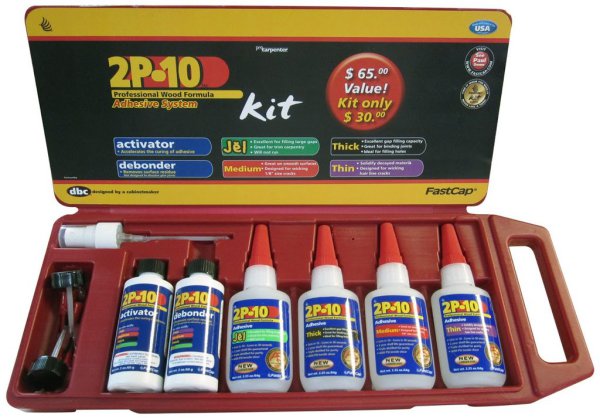
A kit like this from FastCap is a great place to start.
CA glue, which most everyone knows as super glue, has recently developed quite the following, leading to a wide variety of choices in makers and products. The biggest expansion in product lines has come in the form of different viscosities, from thin to thick, which allow for greater control and the ability to be used in more situations. The thin derivation is great for making repairs where something is cracked but not really in two separate pieces and the thicker varieties are great for gap filling, while the medium is a good, all around, gluing choice.
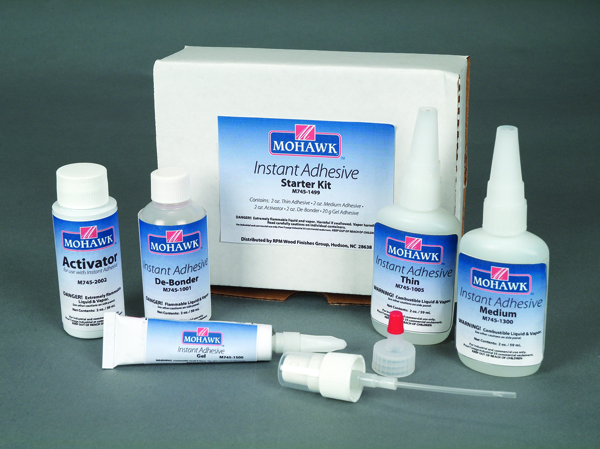
Plenty of companies, like this one from Mohawk, offer kits that include different viscosities and activators.
The other advancement, the one which makes super glue super fun, is the addition of spray activators. An activator will make CA glue set up almost immediately, changing the clear, easily flowing liquid into a hard crystalline structure with great adhesive quality. The activator makes CA glue work the way you have always dreamed for glue to work – you have time to get the loose pieces into position and when they are, just shoot them with activator and there they stay. And, the repairs are incredibly strong.
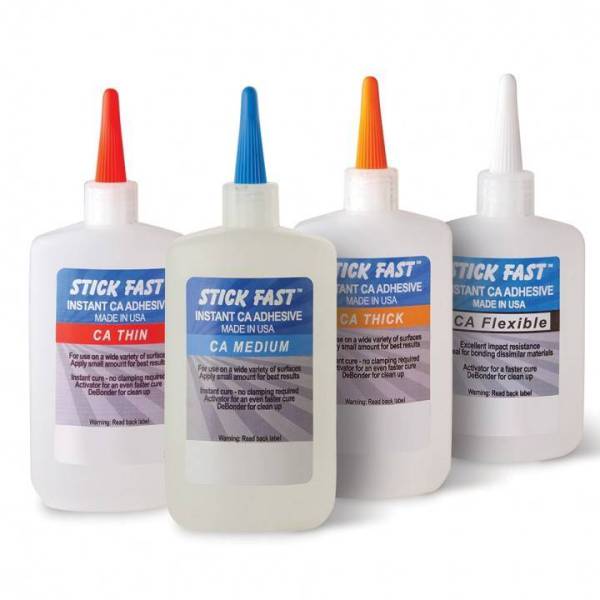
The Stick Fast line, available at Rockler, offers many choices, including activators.
My first introduction to CA glue in woodworking came in the form of a presentation at the St. Louis Woodworkers Guild. The speaker was discussing building intricate handrails, which were made of many small pieces of wood, connected end grain to end grain, to form the curvy bits at the top and bottom of the stairs. He showed how he was able to use nothing but CA glue in the tightest of spots to produce quick, strong and lasting bonds.
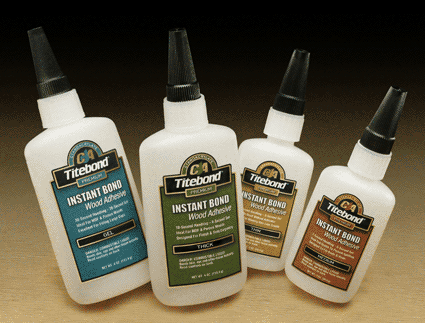
Titebond’s Instant Bond is available at Woodcraft and features a full line of viscosities and activators.
End grain joints are notoriously horrible glue joints in any other world, but in the super glue world the joints held up great. He brought in some samples and glued them right in front of our eyes and in just seconds formed a new piece of wood which no one could break. All he did was put the CA glue on one part and sprayed the other with activator. As soon as the two pieces touched, the bond was complete. On joints which required some open time for alignment, he also had the option to use only the CA glue and not shoot the activator until everything was lined up. The glue closest to the surface would dry immediately to hold everything in place and in a short amount of time the glue on the inside of the joint would harden for a complete bond. It is a real game-changer in spots which are traditionally very difficult to connect.
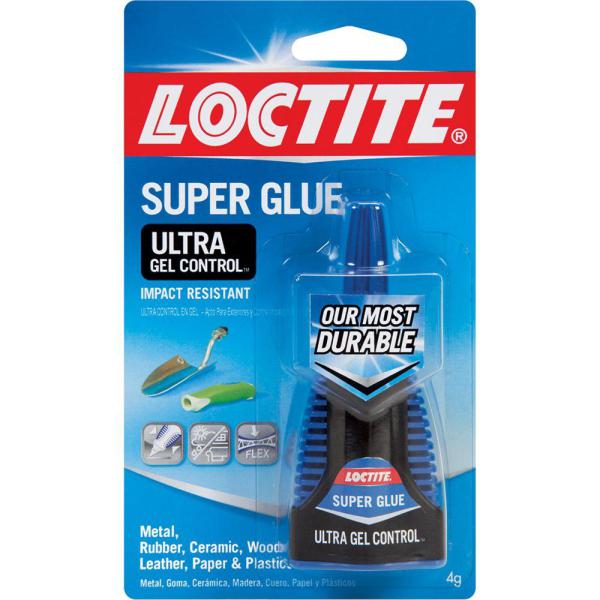
Brands like Loctite are commonly available at many hardware stores and perform just as well, though their activators will not be as easy to find.
Besides simply holding two things together, CA glue also has many other uses. I commonly use it when I am in the final stages of finishing and find voids which need to be filled. If the voids are big, epoxy is usually the choice, but CA glue works great as a type of clear filler between the epoxy and the final finish stages. I typically use the medium or thick variety and hit it with the activator for a speedy surface fill and repair. Once the CA glue sets up it can be sanded and worked like any other plastic finish and then top coated without issue.
CA glue is also great as a wood hardener. It isn’t uncommon for me to run into wood that is decayed or starting to decay somewhere (especially in spalted or “character” wood) and needs a little support structurally. By soaking the questionable wood with the thin version of CA glue, I can quickly turn a delicate spot into a spot which is as hard as rock and will stay bonded with the surrounding wood. And, again, it happens almost immediately, even without an activator.
Lastly, CA glue can be a finish all by itself. I don’t personally use it as a finish, since I am not a wood turner (you can find out why by clicking here), but I know plenty of people who do. Usually, it is used for smaller projects like pens and bowls, where less-than-perfect wood is a common choice. I suspect it was first used to simply hold burled wood together and then people started to realize that it filled voids and finished nicely. After that, it was a logical step to start using it as the finish and take advantage of its strength and immediacy.
The big negative for me, when I started using super glue on a regular basis, was the possibility of accidentally gluing myself or getting glued to something else. I think everyone knows that super glue bonds immediately to skin and it seems like everyone is always warning everyone else to not get it on their skin, so I used it with trepidation. However, since using CA glue now, almost every day, I can tell you that it is much less scary.
I have no problem or concerns with using my raw, ungloved finger to wipe up a drip of super glue like I would any other errant liquid. If you do the same, you just need to be smart about it. If you get it on your hand, don’t immediately grab something – it will stick. Just let it dry and you will have no problem. And, if you do stick your fingers together, don’t freak out. Enjoy the moment and look at your fingers in awe and appreciate how good the glue works on your skin. Then, simply wipe the glue with acetone and you will be unstuck. And, even if you get CA glue on your skin and do nothing about it, the glue will start to peel off after a couple of days without causing any pain or damage. It really isn’t as life-changing as others might make it out to be. As a matter of fact, I even know a guy (not named here for professional courtesy) who shot CA glue directly in his eye, and though a bit uncomfortable, had no real issues arise from it.
I recommend having three viscosities (thin, medium and thick) of CA glue and a spray activator in your shop at all times, ready to go. Purchase it before you need it, then you will have it on hand when the need arises and you can take advantage of the speed it offers. I guarantee that once you start using CA glue in your shop, you will find a million uses for it too.







Have something to say? Share your thoughts with us in the comments below.